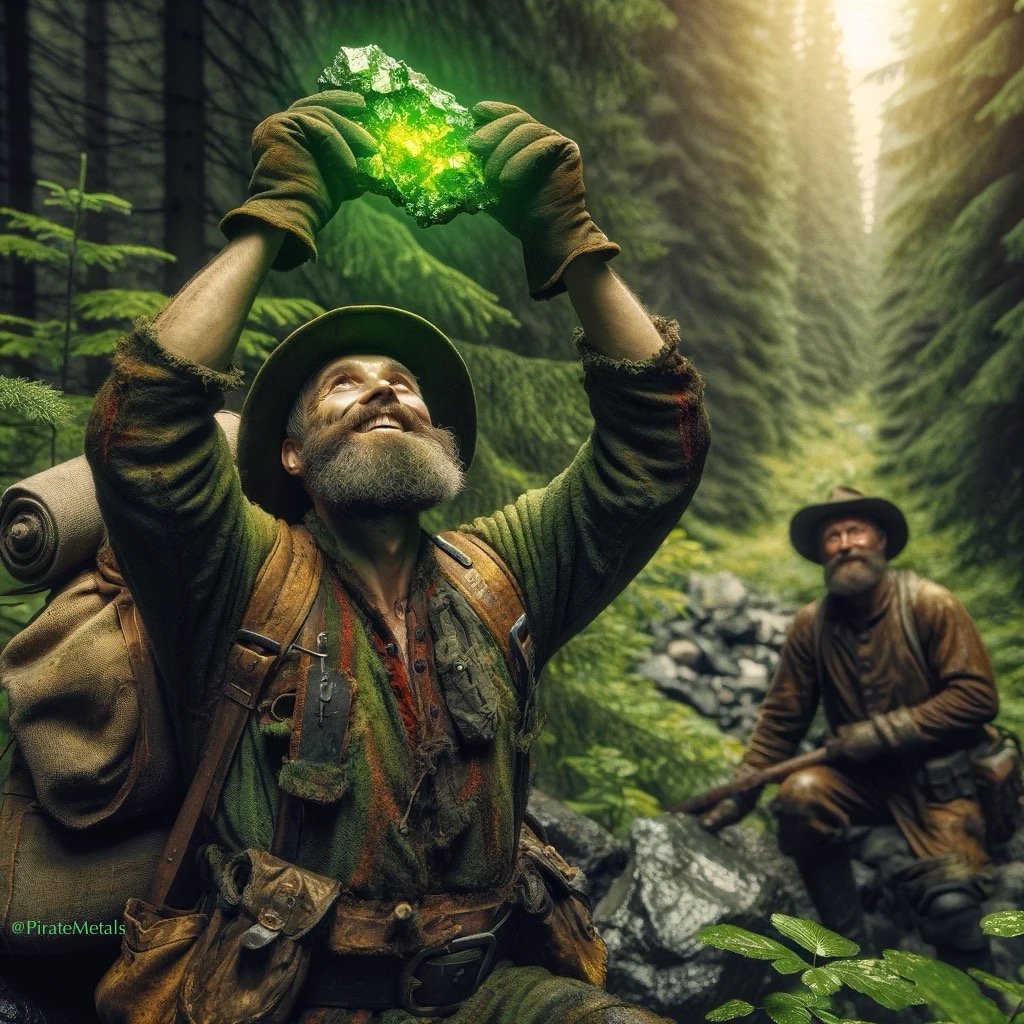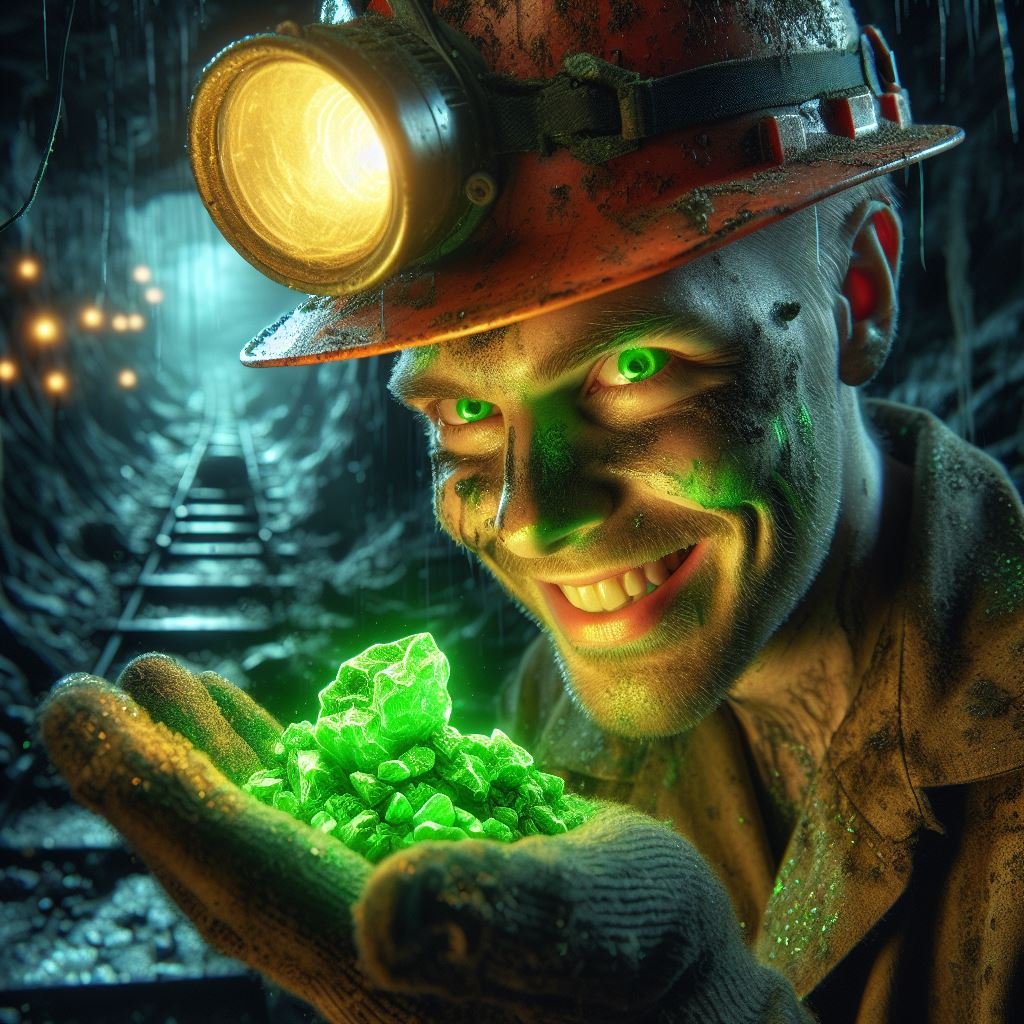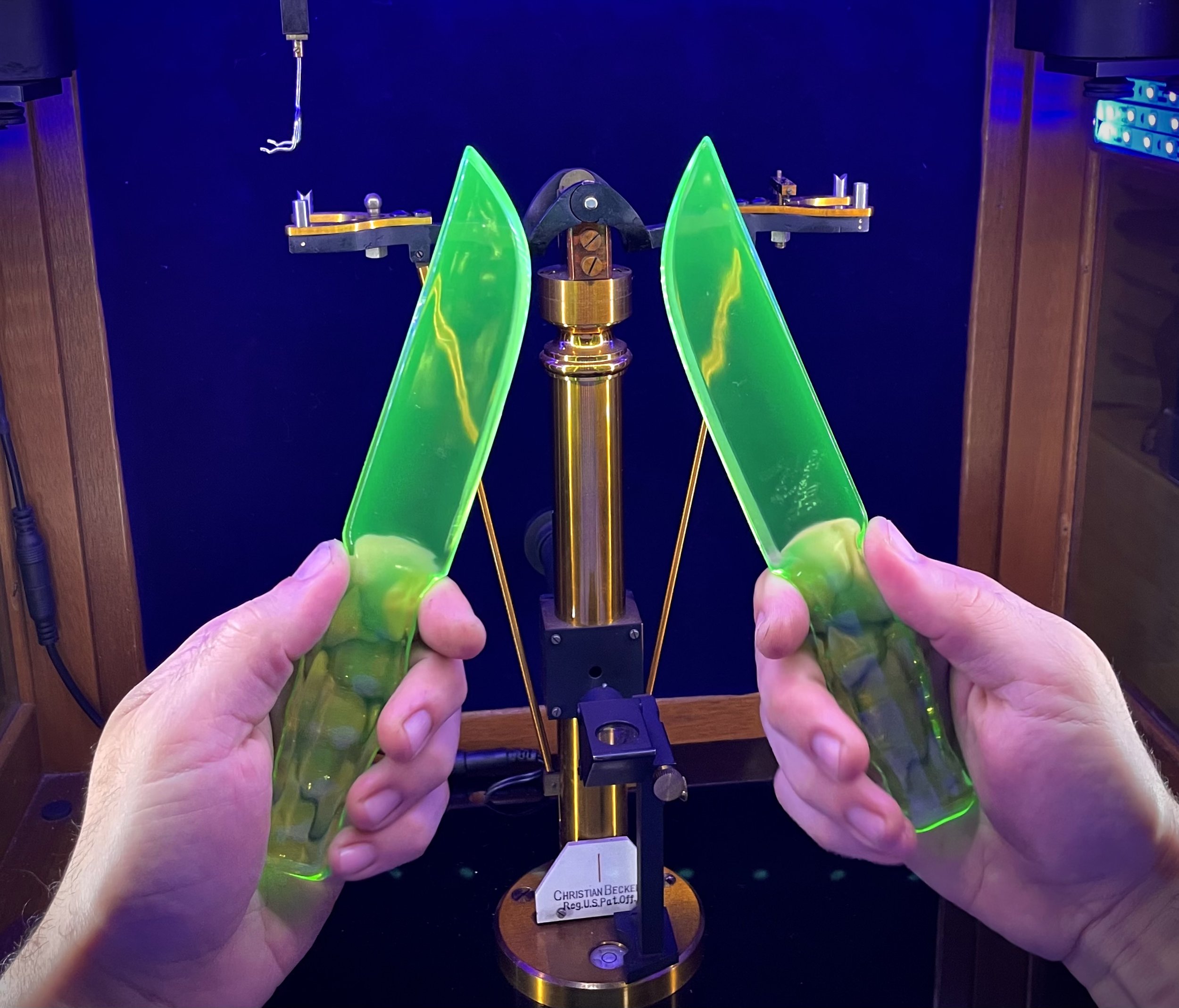
History of Uranium Glass
Uranium glass, known for its distinctive fluorescent green color, has an intriguing history that dates back to the early 19th century. Its unique glow, especially under ultraviolet light, is due to the presence of uranium oxide in its composition. Here’s a brief history, highlighting its first applications, the distinction between Vaseline and uranium glass, and notable manufacturers.
Early Applications of Uranium in Glassware
The first known application of uranium oxide in glassmaking dates back to the early 19th century. In 1833, Franz Xaver Riedel, a Bohemian glassmaker, developed a yellow-green glass by adding small amounts of uranium oxide to the glass melt. This innovation paved the way for the wider use of uranium in glassware, leading to its peak in popularity during the late 19th and early 20th centuries. Uranium glass was admired for its striking appearance and was used in a variety of items, including vases, goblets, and decorative objects.
Vaseline Glass vs. Uranium Glass
While all Vaseline glass is a type of uranium glass, not all uranium glass can be classified as Vaseline glass. The key difference lies in their appearance:
• Vaseline Glass: This term specifically refers to a type of uranium glass with a peculiar oily, yellow-green color that resembles petroleum jelly (hence the name “Vaseline”). Its luminous quality is particularly pronounced under black light, where it exhibits a bright green fluorescence.
• Uranium Glass: Uranium glass encompasses a broader range of glassware that contains uranium, including pieces that may not have the characteristic yellow-green color of Vaseline glass. The color spectrum of uranium glass can range from yellow to green and even pink, depending on the conditions of its production and the amount of uranium oxide used.
Famous Makers in History
Several glassmakers became famous for their production of uranium glass, contributing to its popularity and development through the ages:
• Fenton Art Glass Company: Founded in 1905 in the United States, Fenton quickly became one of the most prolific producers of uranium glass, especially known for their hobnail patterns and intricate designs. Their pieces are highly sought after by collectors today.
• Boyd Glass: Established in 1978, Boyd Glass continued the tradition of producing uranium glass into the late 20th century, even after many other manufacturers had ceased production. Boyd was known for a wide range of colorful, collectible glass items, including figures and decorative objects.
• Other notable makers: Other significant manufacturers of uranium glass include Mosser Glass, Heisey, and Cambridge Glass. Each of these companies contributed unique styles and innovations to the world of uranium glass, leaving behind a legacy of beautiful and collectible glassware.
The allure of uranium glass lies not only in its captivating glow but also in the rich history of its manufacturers and the craftsmanship required to produce it. Collectors and enthusiasts continue to celebrate and preserve this unique form of glassware, ensuring its place in the annals of decorative arts history.
The recent resurgence in the collecting of uranium glass, particularly among young enthusiasts, has brought this unique glassware back into the spotlight. Modern collectors are drawn not only to the historical and aesthetic aspects of uranium glass but also to the thrill of the hunt. Armed with black lights, these young collectors are scouring antique shops, thrift stores, flea markets, and online marketplaces, searching for these hidden gems.
The use of black lights is a critical tool in this pursuit, as the uranium content in the glass causes it to fluoresce with a bright, unmistakable green under ultraviolet light. This makes it easier to identify genuine uranium glass pieces among other glassware. The excitement of discovering a piece of uranium glass in the wild adds to the appeal for these collectors, turning what could be a simple shopping trip into a treasure hunt.
Social media platforms and online communities have played a significant role in this resurgence, allowing collectors to share their finds, exchange knowledge, and connect with others who share their passion. From posting glowing hauls under black light to sharing tips on where to find the best pieces, the online uranium glass community is vibrant and growing.
This renewed interest in uranium glass is not only preserving a unique part of glassmaking history but also introducing a new generation to the beauty and intrigue of collecting antique and vintage items. The fusion of history, science, and art, coupled with the excitement of the hunt, makes uranium glass collecting a captivating hobby for enthusiasts of all ages.









